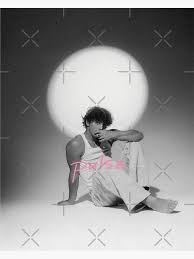“Evermore”, finding meaning in the Folklorian Woods
December 16, 2020
“It feels like we were standing at the edge of the folklorian woods and had a choice: to turn and go back or travel further into the forest of this music,” wrote Taylor Swift. Her audience was astounded by the surprise release of “Evermore” on Dec. 10, her ninth studio album, and the second one this year.
The news came on the morning of Dec. 9 that “Folklore”, her previous album released just four months prior, would be getting a sister record that night. “Evermore” continues “Folklore”’s poetic storytelling, inspired by the books Swift has busied herself with reading throughout quarantine. She spent this time accompanied only by her cats and boyfriend Joe Alwyn, who contributed to the songwriting on both albums. Abandoning the pop persona she’s adopted for much of her previous music, Swift’s newest releases are alternatively folk inspired, which puts them in a genre she hadn’t taken on until now. They reflect her growing willingness to be vulnerable in her writing, expressing raw emotion through fiction by departing from any semblance of a formula and experimenting with collaboration and perspective.
“Evermore”’s narratives follow the storytelling journey “Folklore” started, and she tells tales of heartbreak and loss, love both romantic and platonic, and the nostalgia of introspection many years on. It’s an emotional record that captures audiences from the opening reminiscent of fairies or dancing princesses with “willow”, to the tearful longing out the window of a secluded cabin in the woods with the title song “Evermore” as its finale.
Swift recounts the tragedies of once star crossed lovers and their fall from grace through elegant prose, in contrast with Swift’s own long term romantic relationship with Alwyn. Apparently infatuated with stories about heartbreak over the past several months, the lyrics allow her emotions to flood into relationships between people of her own creation, with personal narrative intertwined throughout.
This bridge between fiction and reality has also provided audiences with the opportunity to theorize about the sources of inspiration for each song. Swift is known for including Easter eggs in her music videos and promotions leading up to her music’s release, and fans have already found many potential clues for what may be coming next, from a hidden word on an album cover, to the artwork in the background of the “Willow” music video. Swift has yet to confirm any of these fan theories, but she has revealed in the past that she enjoys them. Whether it is a continuation of the Folklore era or something else entirely, audiences eagerly look forward to finding out what is next in store.
The “old Taylor” was pronounced dead in 2016 with the release of Reputation, her sixth studio album, but “Evermore” proves that the “old Taylor” never left. Each new era of her music has come with an apparent rebirth associated with it, and “Folklore”’s release initially drew comparisons to the “indie record that’s much cooler than [hers]” that she referenced in her Red era so long ago. “Evermore” is a sister record to “Folklore”, continuing its narrative with their shared themes, but its connections to her previous music don’t stop there.
Since announcing the album, Swift has revealed that many songs on “Evermore” have direct connections to songs on “Folklore”, and that the music video for “Willow” has scenes that represent specific songs. One scene has also drawn comparisons to her 2010 music video for “Mean,” while “No body, no crime” includes an homage to her country roots in its style and instrumental choices.
Swift has recently expressed her interest in stories about women with dangerous reputations preceding them. These imitate an evolution of her own public persona as she’s faced intense, scrutinizing criticism over the past several years. This gradual change is clear in the drastic differences between each of her albums, looking back on her days as a young pop princess, a nostalgic but driven romantic, an angry woman taking back control of twisted gossip, and someone finally in love with the life she built for herself. “Evermore” has her taking back this narrative another time.
“Isolation can mean escaping into your imagination in a way that’s kind of nice,” Swift remarked in an interview with Paul McCartney for Rolling Stone this year. Eloquently imagined, this escapism resulted in a timely fantasy of heartbreak, loss, and eventual healing; irrefutably some of her best work yet.








